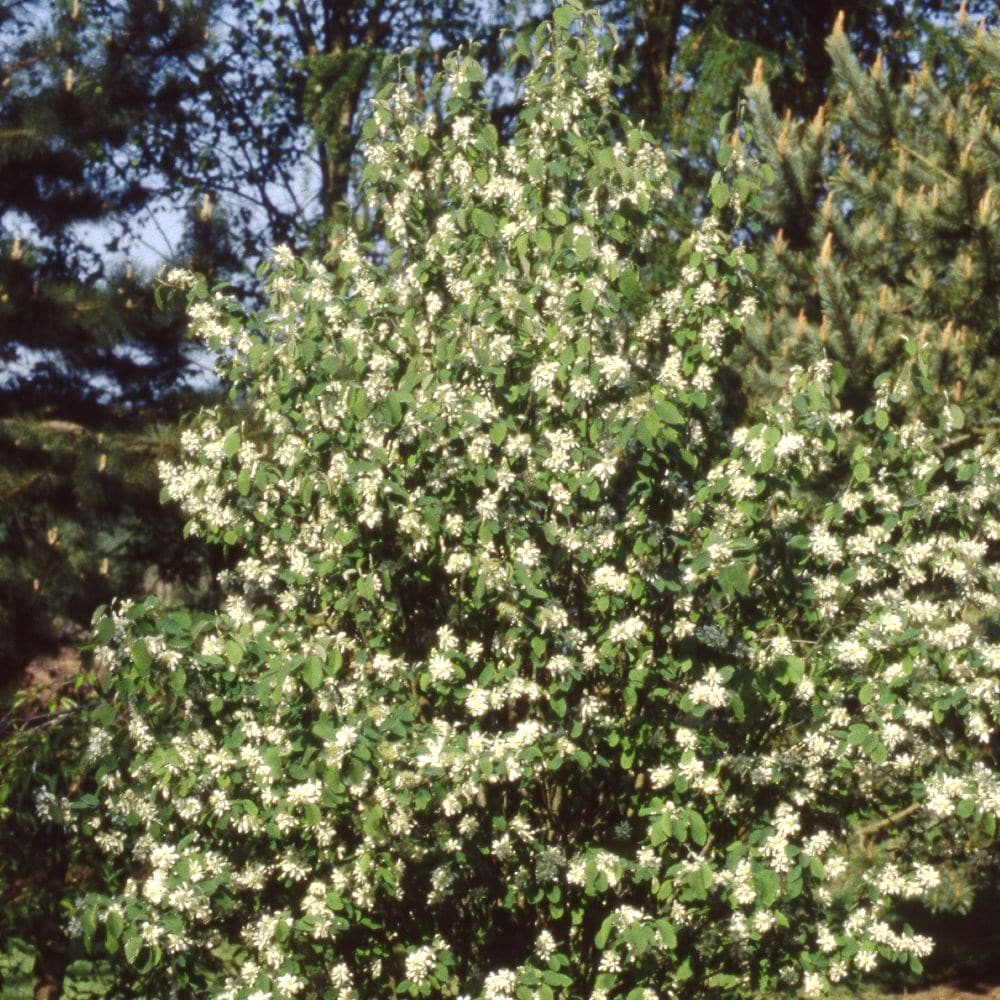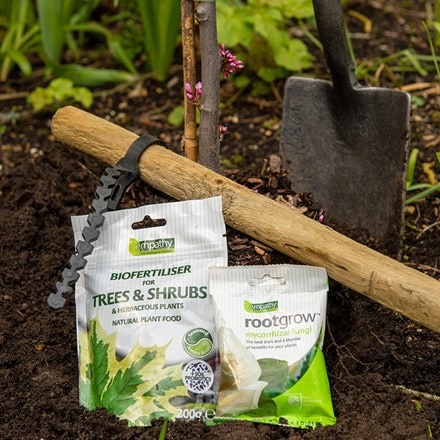Amelanchier alnifolia 'Obelisk' (PBR)
alder-leaved serviceberry 'Obelisk'
- 10 litre pot | 80 - 100cm tall | bush
- £99.99
- In stock (shipped within 2-3 working days)
- 9 litre pot | 0.8 - 1m tall | tree
- £89.99
- available to order from autumn
- 12 litre pot | 1.6m tall | tree
- £139.99
- available to order from autumn
Delivery options
- Standard £12.99
- Position: full sun or partial shade
- Soil: fertile, moist but well-drained neutral to acid soil
- Rate of growth: average
- Flowering period: March to April
- Hardiness: fully hardy
The stems of this small, shrubby tree are distinctly upright, so in time, the plant forms a tall, slender specimen that is ideal for adding height in smaller spaces.
Offering star-like spring flowers, summer fruits and good autumn leaf colour, Amelanchier alnifolia 'Obelisk' provides a long season of interest - as well as fulfilling a very valuable role!
Offering star-like spring flowers, summer fruits and good autumn leaf colour, Amelanchier alnifolia 'Obelisk' provides a long season of interest - as well as fulfilling a very valuable role!
When planting your snowy mespilus prepare a hole up to three times the diameter of its root system. Fork over the base of the pit in readiness, incorporating plenty of organic matter into the backfill and planting hole.
Avoiding frozen and waterlogged soil, these should be planted out as they arrive. If you've ordered a bare root tree, soak the roots in a bucket of water for half an hour prior to planting, or if this is not possible, they can be heeled in temporarily, covering their roots with soil, or potted up.
Water regularly during the first growing season to help it establish, especially in dry spells. Apply a mulch of well-rotted compost or bark in spring to retain moisture and suppress weeds, keeping it clear of the stem.
Although tolerant of most soil types, Amelanchier prefers slightly acidic, moist but well-drained soil and benefits from a position in full sun or light shade. Avoid chalky soils where possible unless improved with organic matter.
Pruning is usually minimal but you can shape lightly after flowering if needed. Remove dead, damaged or crossing branches in late winter or early spring. Protect young plants from late frosts where possible, as this can damage emerging buds. Feed in early spring with a balanced fertiliser.
Avoiding frozen and waterlogged soil, these should be planted out as they arrive. If you've ordered a bare root tree, soak the roots in a bucket of water for half an hour prior to planting, or if this is not possible, they can be heeled in temporarily, covering their roots with soil, or potted up.
Water regularly during the first growing season to help it establish, especially in dry spells. Apply a mulch of well-rotted compost or bark in spring to retain moisture and suppress weeds, keeping it clear of the stem.
Although tolerant of most soil types, Amelanchier prefers slightly acidic, moist but well-drained soil and benefits from a position in full sun or light shade. Avoid chalky soils where possible unless improved with organic matter.
Pruning is usually minimal but you can shape lightly after flowering if needed. Remove dead, damaged or crossing branches in late winter or early spring. Protect young plants from late frosts where possible, as this can damage emerging buds. Feed in early spring with a balanced fertiliser.
- Humans/Pets: Fruit are ornamental - not to be eaten
Goes well with
Premium tree planting kit with softwood stake
kit with with softwood stake
£20.95
In stock (shipped within 2-3 working days)


